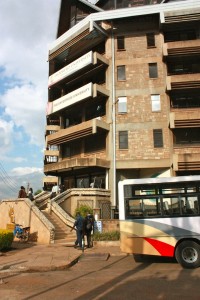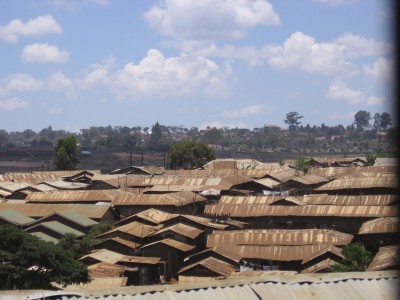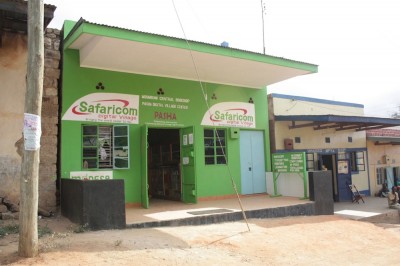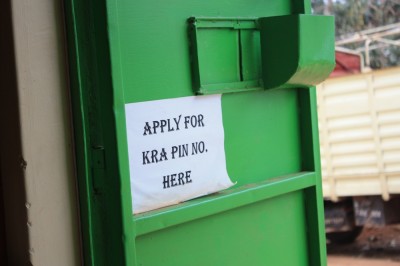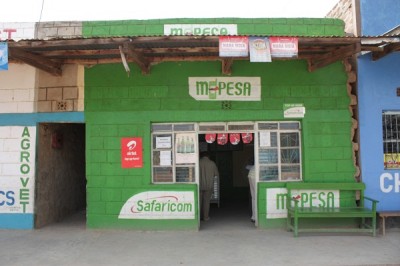Archive for the ‘Innovation in Africa’ Category
Workshop: Designing Apps for the Masses (Inoorero University, Nairobi)
Developing mobile apps for service providers can have unique challenges. During this week’s workshop at Inoorero University, participants bumped into the reality of building a mobile app or services for service providers. It calls for an understanding of not only the immediate customer (the service provider) but also of their customer. These kinds of services can sometimes be soo focused on one group that they provide a poor experience for the other and yet both groups have to be kept happy to grow a sustainable business with a highly defensible business model.
Our workshops tour continues next month.
Message from Africa: We Have Money. We Will Buy.
This is the first of a four-part series on Africa, The Present Frontier.
The usual picture of Africa rarely includes middle class consumers and designer brands. In fact, it rarely portrays the other reality, the true potential that lies on the continent and in its people. Sadly, this robs many western brands off the opportunity to grow their businesses by establishing a presence on the continent. There’s a fast emerging middle class in Africa that has money and aspirations. Are there enough businesses supplying hope and the stuff they dream about?
In April 2011, the African Development Bank released a report on Africa’s Middle Class that showed the floating middle class has grown to over 20% of the population. This segment between the poor and the established middle class, is the only part of the economic pyramid that has had significant growth over the last 20 years achieving 100% growth in the last 30 years. They maybe susceptible to shocks that easily push them back into poverty but unlike their counterparts living in abject poverty, they have money to spend. With a population of 1 billion people, approximately 700million of whom have mobile devices, I can easily suppose a significant number of the floating class are connected. In itself, that is only important to telcos. However, it points to a growing trend everywhere else. An increasingly larger number of people with money to spend on connectivity (for whatever reason) signals a growing appetite for technology and services that connects people. It also signals a narrowing of the digital divide. Among many other signals emmanating from Africa, these two bode well for tech enterprise in Africa. Africa is attractive.
A number of brands in both tech and non-tech sectors have seen the signals from the continent and jumped on the opportunity to achieve phenomenal growth. Here are 7.
- Syngenta recently announced it’s intention to grow its Africa business to $1billion. The firm will invest $500million and grow its workforce by 700 over the next 10 years.
- Diageo has invested $1.5billion in Africa over the last 5 years. Their Kenyan unit, maker of the iconic Tusker beer brand, EABL was one of the first listed firms to breach the $1billion market capitalization milestone.
- Unilever currently earns over $3.5billion a year from its African operations and is working to double that within the next 5 years. A big part of their focus appears to be a push deeper into rural areas where a good number of the floating and middle income population live.
- Visa acquired South African payments firm Fundamo for $110million as part of their strategy to grow their business on the continent. Despite the apparent threat their business faces from mobile payments, Visa sees great potential on the continent and executives contend that mobile payments won’t put them out of business. The acquisition of Fundamo signals their intent to never let mobile out of their sight.
- Samsung grew revenues in Africa to $1.2billion by 2010 and began a push to grow this to $10billion by 2015 with investments of $140million on the continent. Africa is the fastest growing market for mobile phone market in the world.
- Designer cosmetics maker L’Oreal expects Africa’s middle class to double over the next 10 years. It aims to grow its market 10%-20% year on year until it attains a 16% market share in Africa.
- Nokia was until recently the world’s largest mobile phone vendor. It’s number 1 position is now held by Samsung. However, five years ago, Nokia’s sales in Africa were estimated at $7billion (according to Wikinvest). It’s ability to churn out devices that struck a chord with African consumers was legendary and is still one of the continent’s most recognizable brands.
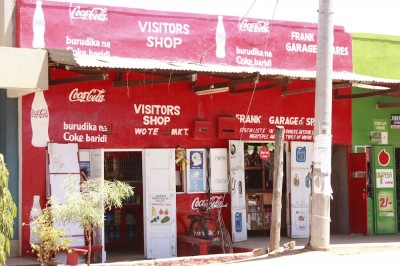
CocaCola branded shop in Kenya's Makueni District. CocaCola is the most successful beverages and FMCG business in sub-Sahara Africa.
Macroeconomic signals emanating from the continent have of course played a big role in attracting foreign investment. GDP growth in African countries touches double digits in some countries, growth rate unlikely to be witnessed in developed economies where economic growth has stagnated for some and shrunk in others (hello Greece!). Driven by agriculture, tourism, minerals and financial services, economies on the continent have outperformed those in the west even during the worst of the recent financial crisis. Sub-sahara Africa in particular has seemed insulated from the chaos in financial markets in the rest of the world. Africa is growing.
Whilst the usual story about Africa has attracted non-profits and social entrepreneurs to the continent, the story of consumer aspirations, economic growth, political stability and an increasingly educated and savvy population has attracted their for-profit counterparts. Some of the social enterprises that have setup shop here have had great success whilst others have come to Africa to die. A good indicator of whether a social enterprise will succeed on the continent is sometimes determined by how effectively it communicates hope to its market. When marketing and communications departments use the same tone for fundraising in the west to sell merchandise in Africa, one can expect dismal results because the tone in the fundraising message is one of hopelessness and desperation.
For-profit enterprises have not had to struggle with this dual-message strategy. Their message is usually ‘Buy my great stuff’ or ‘My stuff will make you great’. Even when they deliver very little hope, it goes a longer way than low prices. Some big brands have learned this the hard way. Expecting to acquire huge market share by adopting a low-margin high-volume business model that was successful in India, Airtel was handed a rude shock by the continent and has had to go back to the drawing board.
As some have suggested, hope can make a big difference to those living in economic hardship sometimes resulting in higher spending. Africa has great aspirations. Some brands have known this all along and have been handsomely rewarded by customers in Africa. Here are two brands that have always had great success with the BoP customer in Africa.
- Safaricom is East Africa’s largest mobile phone company with the world’s most notable mobile money platform, MPesa. Here’s an ad campaign they have been running recently in Kenyan media. Even with the most expensive on-net calls Safaricom remains by far the largest network by subscriber numbers and revenue.
- Coca Cola has been very successful in Africa. Present in 56 countries and territories on the continent and with over 160 bottling plants this soft drinks maker has a distribution channel that is the envy of many in the fast moving consumer goods industry. In places where there is no medication, education or even healthcare, you may still find a Coke. Their advertising seeks to inspire and the results speak for themselves. Here’s an ad currently running on African television as part of their 1 Billion Reasons to Believe in Africa campaign.
Fast growing economies, a fast growing middle class, political stability and a growing ICT sector are current features of Africa that make it a great place to be for those seeking to expand. It is also increasingly attractive for technology businesses that understand the African customer or are willing to take the time to do so. Some of the top performing brands in Africa today understand this and have been on the continent for a long time. While everyone else was talking about Africa being the next frontier they saw Africa as the present frontier. It’s still early enough for businesses to establish a presence with new products and services that have not existed on the continent. Like Wonga launching it’s first international location in South Africa.
Africa is here. The message from Africa to the rest of the world is simple.
Have money. Will buy. Who’s selling?
Align With The BoP Customer’s Aspirations. Or Die.
Kibera is Kenya’s largest slum: informal settlement if we go by the more established euphemism in use today. The corrugated iron sheet roofs do not stand alone on this vast landscape but are interspersed by TV antennas, so many they seem to stand guard like an army watching over the roofs as far as the eye can see. Should the residents of Kibera be spending their hard earned money on television sets? Shouldn’t they be fighting their way out of poverty? Saving for their future? Investing in better healthcare?
I hear these questions frequently enough from visitors from the West. Very valid questions which even middle class Africans ask of their lower-on-the-BoP ‘brethren’. I especially hear these questions asked by many involved in social enterprises with products that have obvious benefits to users rural, poor or both.
There exists a disconnect between these organizations’ aspirations (for instance: eliminate the use of kerosene) and their customer’s aspirations (for instance: be connected to electricity) introducing some interesting challenges for vendors. The focus by the vendor on building a product that eliminates harm and improves well being leads the business into a cul-de-sac where great products go to die. The same cul-de-sac where healthfood for the masses is to be found together with last year’s new year resolutions. The benefits of the product are undeniable and yet uptake remains poor. Sometimes the message behind the marketing communications destroys any chance a product has in the market. Especially when it asks customers to acknowledge, by purchasing the item, that they are financially unable to cope with the rising cost of living. An admission of defeat. The product does not provide a roadmap for advancement and by being an end in itself rather than a milestone on the journey to success catalyzes little hope for the future. No one wants to be hopeless, no matter how affordable it is.
Putting a great deal of thought into the design of a product comes easy for social entrepreneurs (at least it should) because they put impact before financial reward. However, the always very noble motivation of the service or product informs its positioning in the market. A market that also includes purely commercial players playing by a different rule book. This positioning sometimes aludes, through the products marketing message, to the hardship, poverty or level in society the user is most likely to be in. The poor (generally speaking) don’t wear the title with honor and pride. Reminding them that they are poor and disadvantaged at the point of purchase may only work as long as a competing product that tells them they can be superstars doesn’t exist. Here are two thoughts that are stirred in me whenever I travel to rural areas:
The customer social enterprises seek to convert may be in a disadvantaged situation or season in their life. If your messaging speaks to them as such, there will be a problem. Rural customers, especially those towards the bottom of the economic pyramid, don’t necessarily view themselves as poor. They make sophisticated financial planning decisions all the time trading-off performance against running cost and cost of acquisition against status quo. Speak to the job they are trying to get done and the aspirations they carry or your business will be on the wrong end of the trade-off.
Price isn’t everything in Africa. Ask Airtel, they have found out the hard way. Features you think matter to users may be of little consequence when held up against alternatives. Equity Bank grew rapidly as word of mouth spread about their easy-to-access credit and easy-to-open bank accounts resulting in acquisition of customers previously classified as ‘unbankable’; long queues in banking halls and at the ATMs notwithstanding. Spending a little time (at the very least) with customers and listening to their story may provide you with clues on what they need to get done and how pressing the need for a solution is. The intensity of your customer’s pain dictates the value trade-offs they are willing to make.
A customer only experiences pain because they are trying to get something done without the level of success they consider acceptable. Innovations that have succeeded in Africa have empowered customers not disempowered them. Our next posts will delve a little deeper into this.
Government Services Intermediation: The New Role for Cybercafes.
Mbumbuni is a rural market town in Kenya’s Mbooni East District approximately 120km from Nairobi. Within the market is one of the Kenya ICT Board supported Pasha Centers and probably one of the best equiped cybercafes I have seen. When I visited the area in August of 2011, the 3G signal was poor and the center was using a GSM router connecting via EDGE to provide access to clients. The resulting experience was of course poor. For the residents in the area, the next cybercafe with a good connection is in Masii 8km away or in Wote town 50km away. For anyone wishing to register with the tax authority (a prerequisite to opening a bank account), a working cybercafe is the primary mode of accessing the authority’s online portal. There is no way of obtaining the registration at a KRA office. Cybercafes and Pasha centers charge an average of Ksh150 and as high as KSh250 to help clients complete the process and only a per minute charge for those savvy enough to login and do it themselves. For the residents of Mbumbuni, the Pasha center is their first option. Other options are guaranteed to be more expensive.
In the last four months I have travelled to parts of Kenya I only read about. Some of them almost 600 km away from Nairobi and others just an hours drive away. I have seen places where cybercafés are doing great and others where they are struggling to stay open. The landscape is varied but inspiring. Our estimates put the number of cybercafes in Kenya at approximately 2,500 most of them concentrated in the more densely populated parts of the country. Although statistics show a growing number of Internet users (35% of the population at last count), the vast number appear to be using their mobile phone as their primary gateway. Although feature phones can now provide 3G Internet access, play music and take pictures they still can’t print, scan or edit documents. With very low PC penetration in the country the rational decision is to therefore default to cybercafes for these tasks and others not yet available on mobile. Such as eGovernment.
The move by government departments and agencies such as the Kenya Revenue Authority to port services onto online spaces and then discontinue offline provision can be seen as a sign of progress. However, in using eGovernment to scale services fast across large areas at low cost, new barriers to access emerge. Digital barriers and cost barriers. These barriers have created new opportunities for cybercafé owners and Pasha center entrepreneurs allowing them to charge for a service that didn’t exist only a couple of years ago. The cyber café has now acquired a new role as an intermediary to government services introducing with it new costs of intermediation.
Whereas eGovernment presents a new opportunity for private enterprise in the form of new intermediation services, the government still needs to find ways of encouraging telcos to deploy better last mile connectivity (3G, LTE) to rural places where the financial investment may not achieve ROI in the short term. If poor connectivity remains a problem, the services may not be any closer to the people than they were before when the residents of Mbumbuni and Masii had to travel to Machakos, Wote or even Nairobi to get government services. In my opinion, there are three areas the Directorate of eGovernment and other actors in the space may consider giving priority as Kenya marches on into a fully digital future.
Better connectivity. Better 3G or LTE connectivity for the last mile to the cybercafes located in rural areas is a good place to start. Providing better connectivity could trigger consumption of data as people find utility for it. In places such as Maai Mahiu and Isinya we heard from a couple of people how frustrating spotty connections are. In Isinya, 40km from the city of Nairobi, residents opt to travel to Kajiado town or Kitengela rather than endure the local cybercafe’s unreliable connections.
Pricing Interventions / Guidelines. When intermediation services become high enough to become a bona fide barrier to access, there’s a problem. Ksh250 is enough to feed a family of four for a day or two. In areas where government services are only available online, this could mean that some families opt out of crucial government services they shouldn’t be having to do without. The initial premise is to bring services closer to the people. High financial costs neuter that objective. Introduction of price caps that keep it financially interesting for enterpreneurs to provide access to these services while remaining accessible to the majority of the people maybe an option worthy of some consideration.
Design for mGovernment. 24 million mobile devices are hard to ignore. Policy guidelines that allows government departments to design and deploy services on the mobile platform should be a priority in the short term. If bringing services closer to citizens is a priority, the mobile handset is as close as it can get.
As new formal intermediaries to government services begin to emerge with the rollout of new infrastructure and services, governments need to keep everyone in the ecosystem on the same page. Cybercafe owners need to remain motivated to provide the services, government departments need to create and train technical and customer care teams and citizens need to be educated on how to access and utilize these services.
Regulation & Innovation – The Challenge for Governments
During the Internet Governance Forum conference held in Nairobi last September, Kenya’s head for e-Government Dr. Catherine Getao made an observation that probably holds very true in many places worldwide. Private sector innovations can happen in the absence of government policy but in many instances government can’t implement innovation in service delivery until legislation and policy is in place. This was in response to a comment I had made on the disparity between the rate of innovation adoption by government when compared to the private sector and the citizens.
Mobile money in Kenya provides a fairly good example of this. M-Pesa is not directly regulated under a full banking license but operates under a special dispensation from industry regulators. At public roll-out, the MPesa service allowed urban Kenyans, for instance, to send money easily and more safely to their rural folk. Service providers then implemented utility payments via mobile money and integration of mobile money with conventional banking services. Within 3 years, firms like PesaPal and iPay had emerged providing a bridge between mobile money and e-commerce. Services in this space are continuing to evolve every year.
Although I can send money, pay utility bills, buy goods and check my bank balance through my mobile phone, I still can’t pay government fees, taxes or levies on it. I still have to go to a bank like I did 5 years ago. Hence Dr Gitau’s comment alluding to the delay caused by the (usually long) wait for development of legislation to guide government adoption of new technology for service delivery.
So whereas mobile money was launched and has continued to evolve in an environment where regulation and policy was yet to be fully developed, the government was unable to leverage this technological gains for its own good. Mobile money in Kenya is a good example of how innovation preceding regulation can be good for the country. Although governments can create an environment for phenomenal progress (like Kenya’s has done), their inability to keep up with the momentum triggered by the private sector for service delivery (due to bureaucracy) is an example of how innovation preceding regulation can slow progress in eGovernance.
This is where the challenge lies for those designing the next generation of eGov services as well as the agencies/departments seeking to improve service delivery through ICT. A highly collaborative multi-stakeholder approach is, in my opinion, necessary to not only accelerate the rate of innovation but the speed at which governance frameworks evolve to cater for the emerging ‘new normal’.
